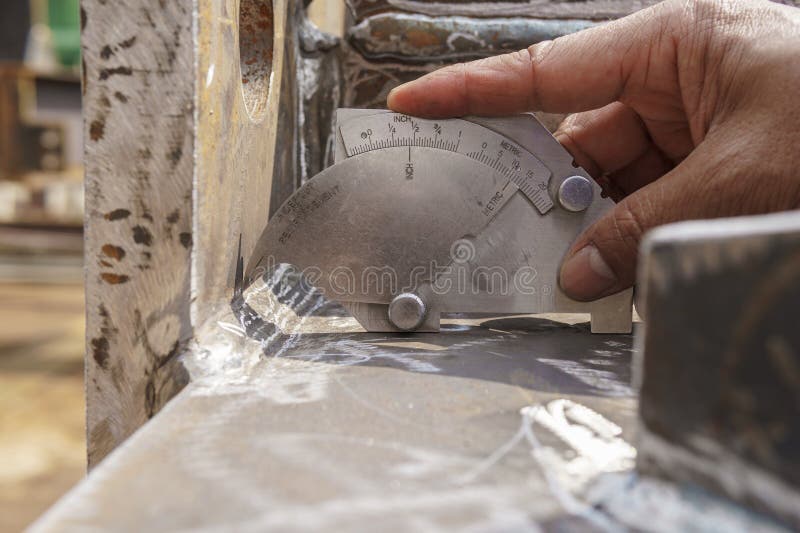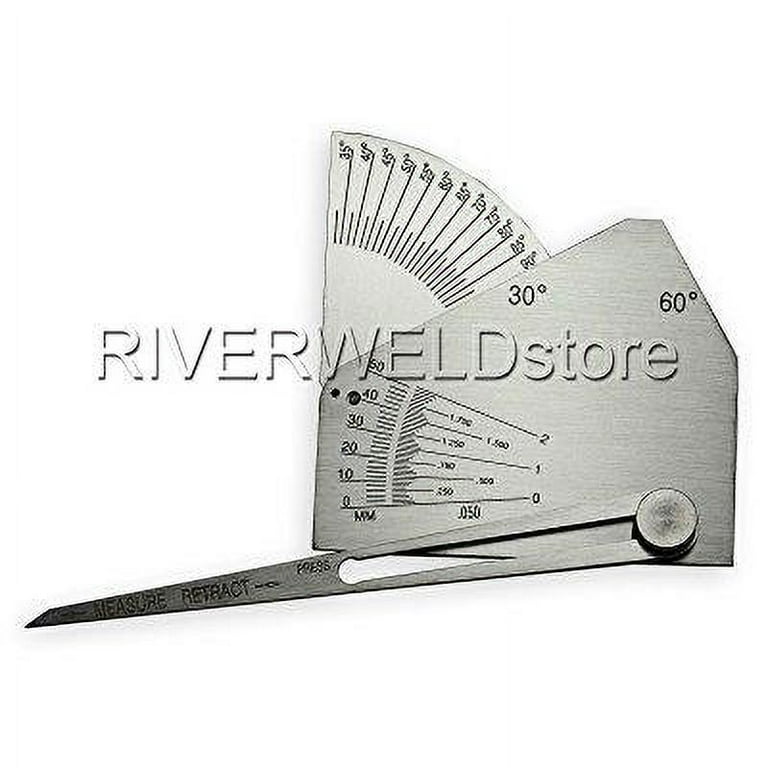Gauge Fillet Weld Specifications: Guaranteeing Quality and Compliance
Gauge Fillet Weld Specifications: Guaranteeing Quality and Compliance
Blog Article
Ingenious Methods to Fillet Weld Inspection and Testing: Enhancing Weld High Quality and Compliance Requirements
In the realm of welding, the top quality and honesty of fillet welds play an essential duty in making sure the structural stability and dependability of numerous industrial components. With the consistent drive for enhanced efficiency and conformity with rigorous requirements, the exploration of cutting-edge strategies to fillet weld assessment and screening has ended up being important.
Advanced Non-Destructive Testing Approaches
Making use of modern technologies, advanced non-destructive testing methods play a crucial function in making sure the integrity and high quality of fillet welds. These techniques, such as phased array ultrasonic screening (PAUT) and magnetic particle screening (MPT), deal in-depth understandings into the weld's inner structure without triggering any damages to the material. PAUT, for example, makes use of multiple ultrasonic components to evaluate the weld from numerous angles, supplying a thorough visualization of potential issues like lack of combination or splits.
By using these innovative non-destructive screening methods, weld examiners can precisely examine the top quality of fillet welds, making certain conformity with market standards and regulations. The capacity to detect flaws early on not just improves weld high quality but additionally protects against pricey rework or failings in structural integrity, underlining the significance of these cutting-edge screening methods in welding inspections.
Robotics and Automation in Inspection

The assimilation of robotics and automation has transformed the inspection procedure for fillet welds, boosting efficiency and precision in high quality assessment. Robotics supply exact control and repeatability in examining welds, ensuring reliable and regular results. Automated systems can be configured to follow particular examination paths, making certain complete coverage of welds and minimizing the threat of human error.
Robotic assessment systems equipped with sophisticated sensing units can spot and gauge weld features with high precision, giving in-depth information for analysis. These systems can determine flaws such as splits, absence of blend, and porosity, allowing timely rehabilitative actions to be taken. Furthermore, robotics and automation permit real-time information collection and evaluation, providing prompt comments to operators and assisting in quick decision-making procedures.
Additionally, making use of robotics and automation in fillet weld examination improves general performance by decreasing examination times and enhancing assessment throughput. By streamlining the evaluation process, makers can make certain weld top quality and conformity requirements are satisfied effectively, eventually resulting in cost savings and enhanced product quality.
Making Use Of Artificial Knowledge for Evaluation
Fabricated knowledge plays a pivotal duty in boosting the performance and precision of analysis in fillet weld examination procedures. AI algorithms can quickly process large amounts of information from weld evaluations, discovering issues or variances that may be challenging to recognize with the naked eye.
In addition, AI systems can gain from previous assessment data, continuously improving their capability to identify potential problems and deviations in fillet welds. This adaptive learning ability boosts the total top quality control process, lowering the possibility of human mistake and making certain that welds meet the called for requirements. By integrating expert system into fillet weld evaluation, sectors can achieve higher levels of performance, consistency, and compliance in their assessment practices.
Portable Devices for On-Site Assessment
Enhancing field assessment performance, the fostering of mobile tools changes on-site assessment procedures for fillet welds. These devices supply versatility and convenience, allowing examiners to conduct complete evaluations in various places, including difficult or remote atmospheres. Mobile devices such as ultrasonic screening gadgets, magnetic fragment inspection equipment, and digital radiography systems provide real-time information and high-resolution imaging capacities, enabling fast decision-making and prompt comments on weld high quality.
One considerable benefit of portable tools is their capability to enhance assessment procedures, reducing downtime and improving overall efficiency - Gauge Fillet Weld. Examiners can easily transport these tools to different job websites, eliminating the requirement for carrying hefty equipment or parts to off-site facilities. Additionally, the transportability of these tools promotes cost-effectiveness by decreasing transport costs and accelerating examination timelines
In addition, the usage of mobile devices for on-site inspection advertises proactive quality assurance steps, as inspectors can immediately identify and attend to any type click for more of potential welding problems or disparities. By including these innovative technologies right into on-site assessment practices, welding specialists can make sure conformity with industry requirements and boost weld high quality, inevitably leading to boosted structural stability and security in numerous welding applications.
Integration of Information Management Systems

Having optimized on-site examination procedures via the utilization of portable devices, the next phase entails the smooth combination of data administration systems to even more improve efficiency and data analysis capacities in fillet weld inspection and testing. By incorporating information management systems right into the examination procedure, companies can enhance information collection, storage space, and analysis. This integration enables real-time tracking of weld high quality, instant identification of flaws, and prompt decision-making to remedy any issues that might occur throughout the evaluation procedure.
Data monitoring systems play a crucial duty in streamlining evaluation information, promoting simple accessibility for licensed employees, and guaranteeing information honesty and safety and security. Via the combination of these systems, inspectors can create thorough records, track link historical data for pattern evaluation, and improve overall procedure effectiveness. Additionally, the integration of data administration systems allows smooth interaction between various stakeholders included in the evaluation process, promoting cooperation and boosting total quality assurance measures. Inevitably, the assimilation of information management systems serves to raise the requirements of fillet weld assessment and screening, making certain conformity with market guidelines and improving weld high quality.
Conclusion
In verdict, cutting-edge strategies to fillet weld assessment and testing have significantly boosted weld high quality and compliance standards. Advanced non-destructive screening approaches, robotics, automation, expert system, portable devices, and data management systems have actually transformed the way weld inspections are performed. By using these innovations, industries can make sure that welds satisfy the called for high quality requirements and regulations, inevitably boosting overall effectiveness and security in welding processes.

Having actually optimized on-site inspection procedures with the usage of portable tools, the following phase involves the seamless assimilation of information monitoring systems to better enhance efficiency and information analysis capacities in fillet weld evaluation and testing. Inevitably, the assimilation of information administration systems serves to boost the standards of fillet weld assessment and testing, making certain conformity with sector policies and boosting weld informative post high quality.

Report this page